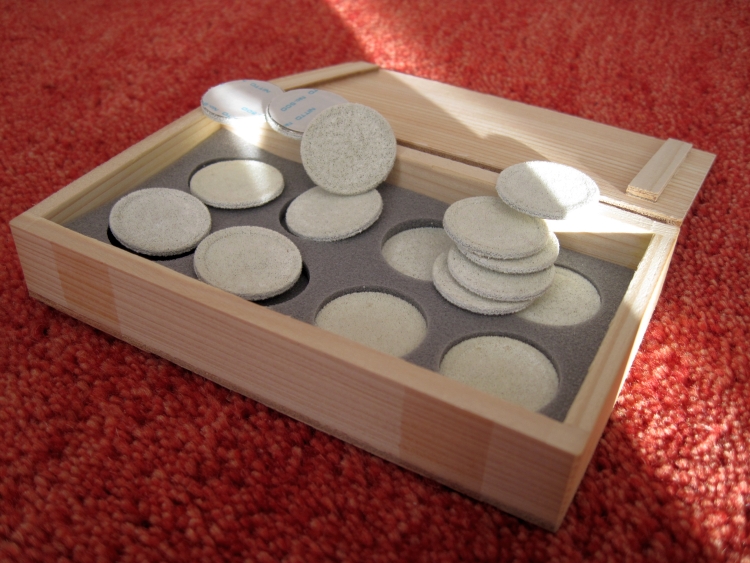
Surely these silly little discs must be the craziest tweak ever. So I could not resist trying them for myself
Like many readers probably, I could not believe that these discs would have much effect if any at all, but would all the reviewers then be making it all up? I couldn’t believe that either. So, there was only one thing to do: get some for myself, to hear what their effect is, in the comfort of my own home, in my own system, no strings attached.
This review is a followup of the earlier Harmonix Tuning Feet and Spike Bases review.
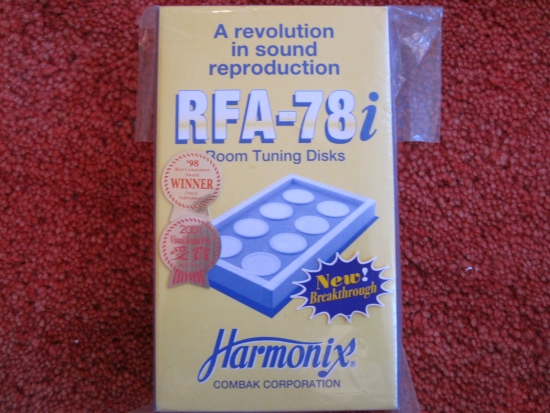
These are tiny discs that you place on walls near corners, to tune the room. What’s that? Tuning a room by means of placing tiny coin-like discs on walls? Indeed, I was fascinated. Also by the price. It’s ridiculous. i admit. But during the workshop that I attended earlier I had heard great improvements when these disks were applied. I especially asked the demonstrator to remove them and replace them so I could hear the effect again and make sure that I wasn’t hearing things. Sure enough: they made a difference. This is why I dared to buy them for myself. Had I not heard them myself I never would have spent this kindf of money. I was lucky to find a demoset for nearly half the newprice which helped to make the decision too.
Crazy coin-sized thingies with some sort of hard fur on them
They look like nothing. Insignificant. And even though I heard their effect before, I still had doubts. Would I hear the effects in my own room, with my own system? Because of this, I kept this review until the very end of the evening. After all other Harmonix stuff had been tested, I placed 10 pieces around the room. 2 before the left speaker, 2 before the right speaker, 2 in the middle of the room by the side walls and 2 in the corners at the rear of the room. So do note that I did not install them as described in the manual, which is in the corners of walls and ceiling. At a show I had already been hugely impressed when the small variant of these coins were just poured out over the floor that I had sufficient confidence that we would hear their effect in my room just by putting them throughout the room too.
update october 2010: at last we did the test as it should have been done: with the tuning disks up in the corners of the walls. Please see below for this follow-up review.
We sat down, played the cd and listened intensely. Mmmm. don’t hear much difference. Mind you, the effect of all tweaks we had auditioned before the 78i’s all had enormous effect on the sound and this obviously was way more subtle.ook them all away and stashed them under a thick blanket in the rear of the room. Just to be safe. Again, at first we thought there wasn’t much difference but then it hit me: the sound was drier, more businesslike now. And the longer we listened, the more sure we became of this. One friend still had doubts. I immediately put them back and sure enough, again after some seconds the sound mellowed up, making for a friendlier presentation. We removed them and put them back some more times using other cd’s and each time this effect was revealed. The third friend now also heard it.
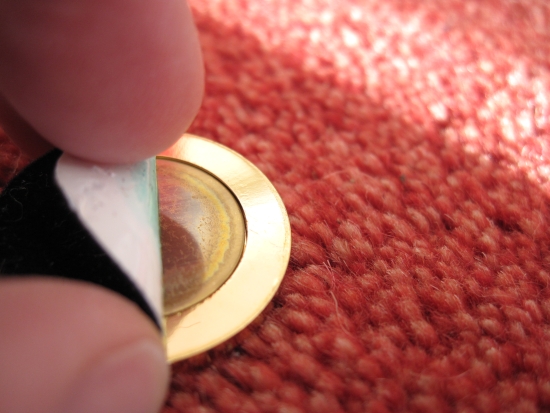
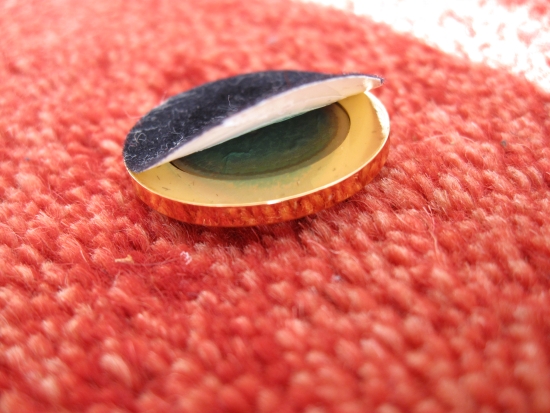
Their effect
What they do is make even a hard-walled, hard-floored room sound like it is fully furnished and has drapes and carpet. It is a mellowing effect, reducing aggression, relieving dryness and making for an overall more pleasant sound. There are no negative side effects unless you really needed the forwardness and hardness to make for an exciting sound. They are more for smooth music listeners than for hard rockers then, I presume.
So am I hearing my wallet?
Trust me: I’m not. Regular readers know me for listening to anything from cheap to ultra expensive. If it’s good I will say it is but if it isn’t good I will also say it. After the first hearing of the 78i’s I was ready to pronounce their effect minimal or even absent. But after some more listening it just became clear that they indeed have an effect, but it is smaller and different from the effect of the other Harmonix tweaks such as feet and spike bases. It also takes some time to develop the full extent of the effect, much like with the Shakti Stone. Why this is, I don’t know, but the effect is there. For sure.
Are they worth the outlay?
That’s the clincher. They cost about 800 euro in the Netherlands which is a crazy amount by any measure. I’m not sure if I will keep them in the system. There’s more experimenting needed before I can make that decision. I do think that if your room is too lively but you don’t want carpet or drapes, they may just be the ticket.
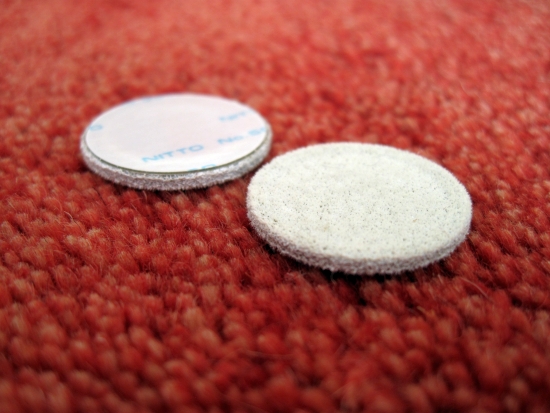
Update october 2010: One more test with the disks now properly installed
Right before I decided to sell the disks, I did one more test, just to see if I should actually keep them. Since one month I moved house and now have a significantly livelier livingroom than before so I wondered if the little disks might actually be at their place better than before. Also I felt that I owed it to them to test them properly installed in the corners of wall and ceiling and not only just scattered around the room. So this time I made sure that I followed the instructions that came with the Room Tuning Disks. This entails attaching them in corners near the edges where wall and ceiling meet on all walls except the floor. I started with the full monty. I put 5 disks on the front wall: 2 in the left top and bottom corner, 2 in the right top and bottom corner and one in the middle between the speakers. Then I put 2 on the ceiling, just above the ones on the front wall. Then I put 4 disks on the rear wall: 2 right behind the listening position at ear hight and 2 more in the top left and right corners, just like I did with the front wall. Then I used 4 more on the side walls; 2 left and 2 right. And finally I put one on the ceiling in the middle of the room. Of course I selected a few test tracks beforehand and listened to them before I installed the disks. After the disks had been attached, the listening resumed. Luckily I did the test with a good friend as I just had to check with him the amount of difference I heard. It was uncanny: we started stating at each other what we heard and we were in total agreement. The sound was much fuller and colourful, the highs were much more fluid and also gentler, the bass was fuller yet not in a boxy way but nicely rounded, and most importantly, the midrange was now so much more real and substantial. In essence the midrange was more mellow, less in your face than without the disks, but so much more believable. The typical Magnepan 3.6 leanness had completely vanished. In its place was smooth, full, substantial sound. Man, this was unbelievable. 16 tiny disks do all this? I still couldn’t believe it, so I took them all off again. Sure enough: without the disks the sound was a bit grey again, very lively but lean and a bit technical. I couldn’t appreciate my sound without the disks anymore. But I did feel that the disks also had a slight negative aspect which was to remove some of the attack and dynamic feeling of the music. It made everything just a little too polished. So we began classifying what happened on a wall to wall basis, one by one adding disks to each individual wall and slowly builing towards a more balanced sound. It turned out that there was a different effect from wall to wall.
Testing the disks on a wall for wall basis
As it turned out you could precisely tune the sound by carefully adding disks to different walls. Just slapping them all on all walls proved slightly too much for my situation so I started carefully from a system without disks and testing them one by one. I quickly learned that some positions mostly had benefits for the soundstage width while other positions did more for the tonal balance. Some positions did both things at a time. What was most surprising was the one disk in the middle of the front wall. Just by itself, it transformed the sound, mostly tonally, by making the treble much more smooth and fluid, while the midrange became more like flesh and blood, ie less clinical and more colourful while also being almost just as present as without the disk and the bass became fuller and more meaty. It also made the soundstage higher. This one disk only had benefits, no downsides here. Now I was hungry for more! It turned out that the disks on the ceiling did too much for my tastes, making the sound bigger and wider but also less focussed and, to exaggerate a little, more blurry. This was different for the one in the middle of the ceiling. This one provided a nicer tonal balance with more warmth without taking away too much or modifying the stage. It did make for a slight dynamic suckout in the mid frequencies, which is mostly good, but for warm cd’s can sometimes too much. Adding disks to the front wall left and right extremes made the soundstage wider and fuller while the one in the center seemed to pull focus more to the middle again. With the 5 disks on the front wall it was just right – not too wide and mellow nor too forward and focused. Adding disks to the rear wall had no influence on the sound balance but did provide a more enveloping and grander soundstage. The ones on the side walls did more for the soundstage than for the tonal balance, making the soundstage wider yet again but also mellowing the sound slightly. In the end I felt that all positions were beneficiary for my sound except for the ones on the ceilingcorners. The latter ones pushed the sound too much into the mellow and relaxed spectrum with the exception of the one in the middle of the ceiling which was felt to add nicely without taking away too much. In the end I felt that the disks on the front- and back walls did the most for my sound, working together to great effect. The others do provide meaningful differences but you have to be careful how you place them and how many you apply.
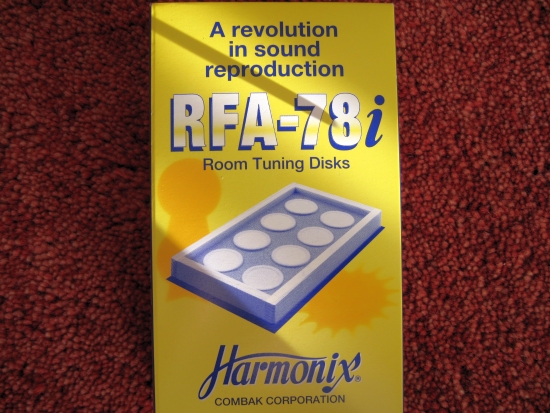
Conclusion
Even if I was not a believer myself at first, my experiences speak for themselves and there is no denying that these little discs really do make a marked difference. You could argue that they are way overpriced and that your money can buy more improvement in other areas of the system. While that may be true, it is also true that a system and room that are already well-balanced, can definitely benefit from the presence of RFA-78i discs.
It is essential that you place them carefully and precisely. Just scattering them on the carpet in the room makes you aware of their ability to alter the tonal balance but leaves out the enormously beneficiary effects for the soundstage. Well-placed, they provide an enormous upgrade for your sound. They do much more than would ever be possible by using drapes and other damping materials. Somehow, they add richness and harmonics to the sound wile also giving focus and substance to the soundstage but how they do it? Beats me. All I can tell you is that I wanted to sell them but ain’t gonna do so anymore, that’s for sure!
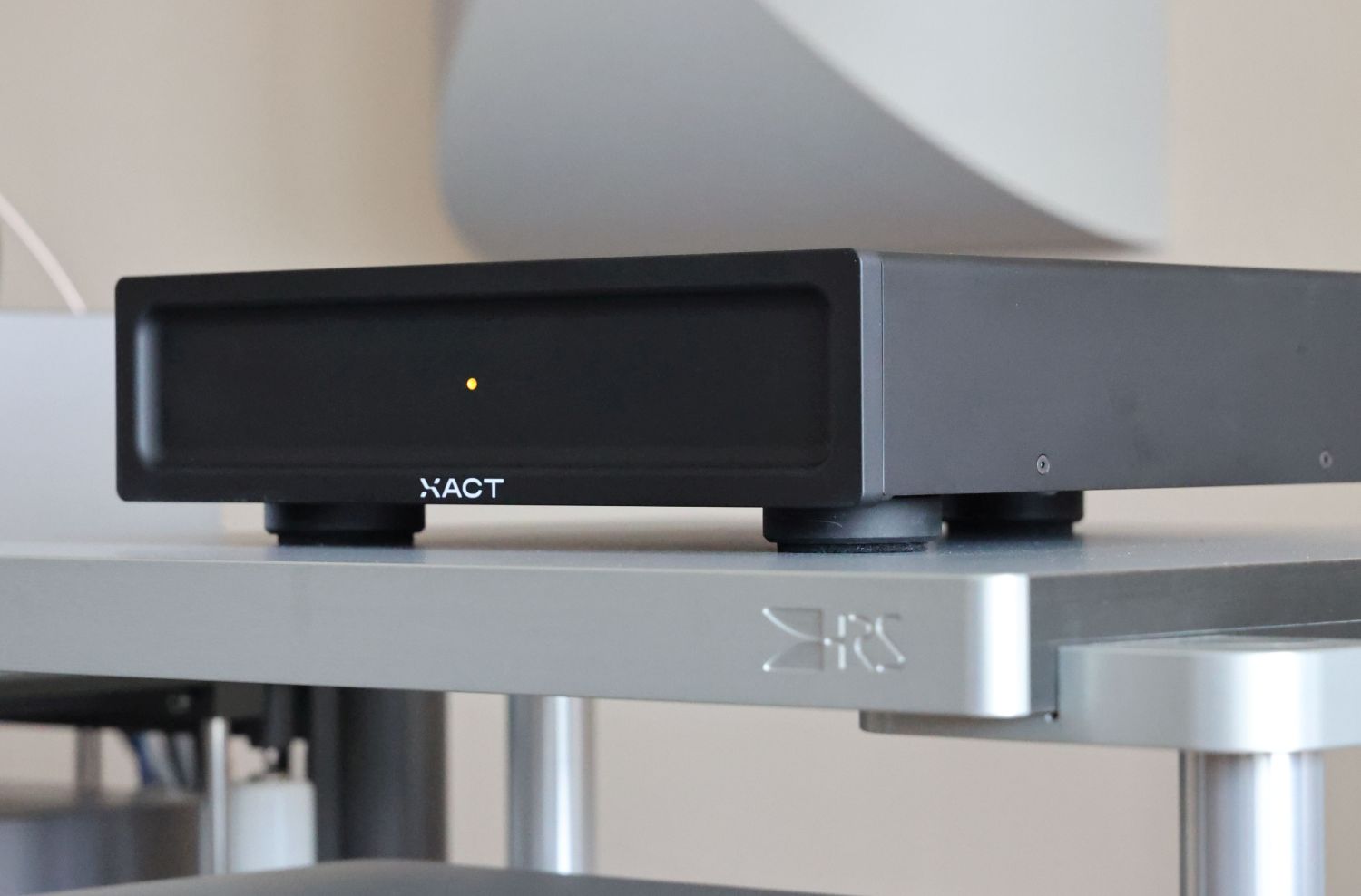
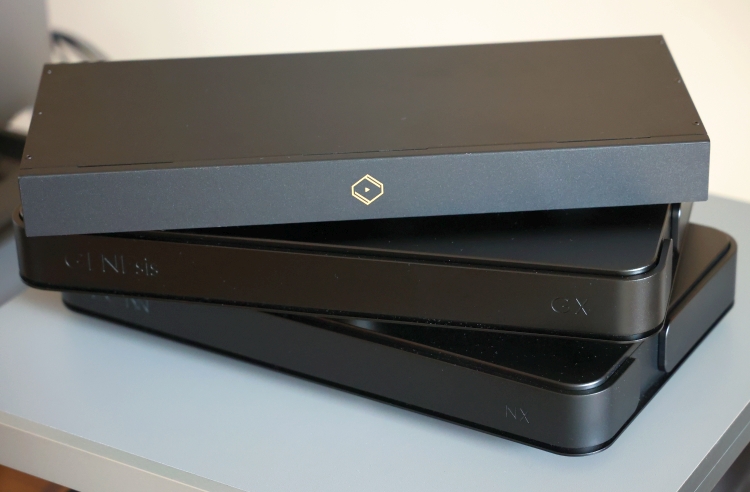
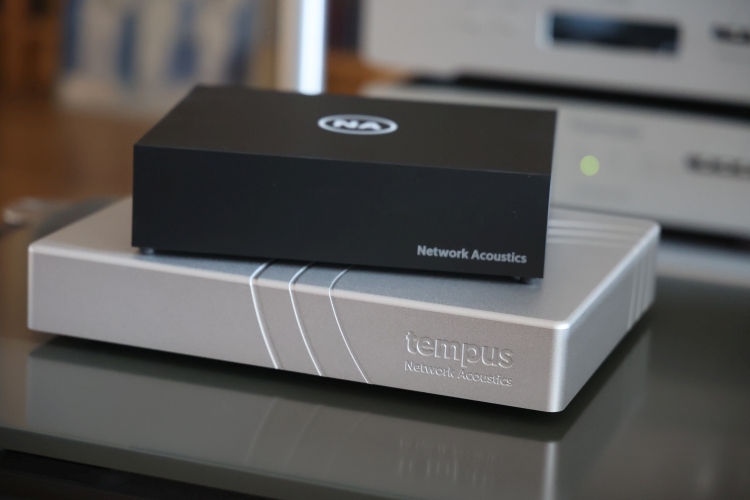

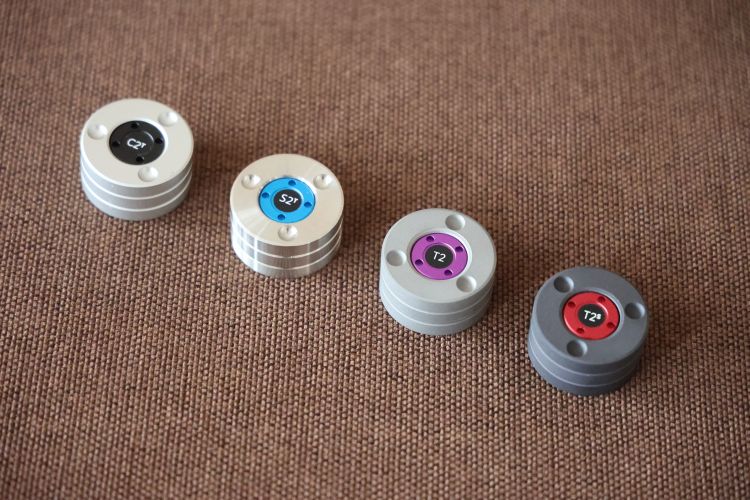
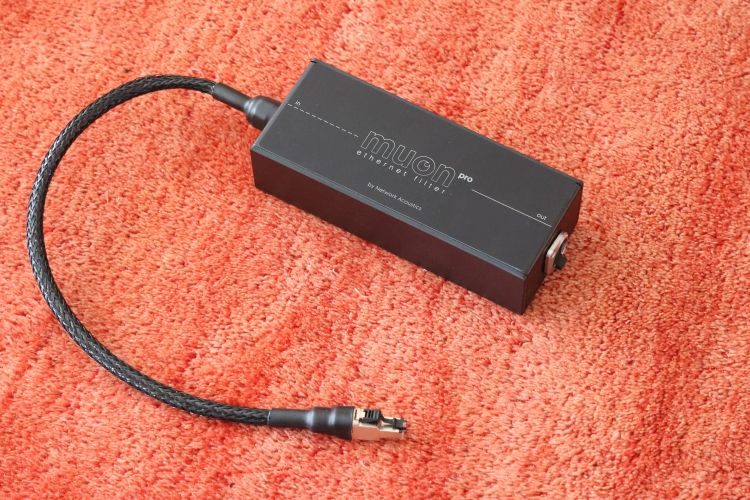
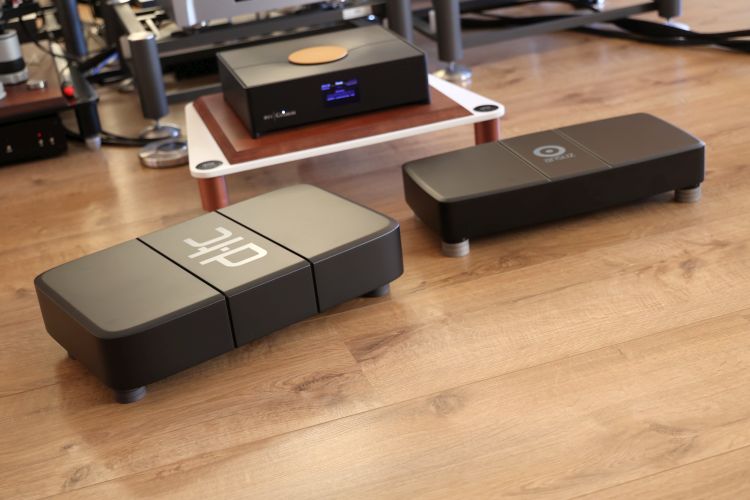
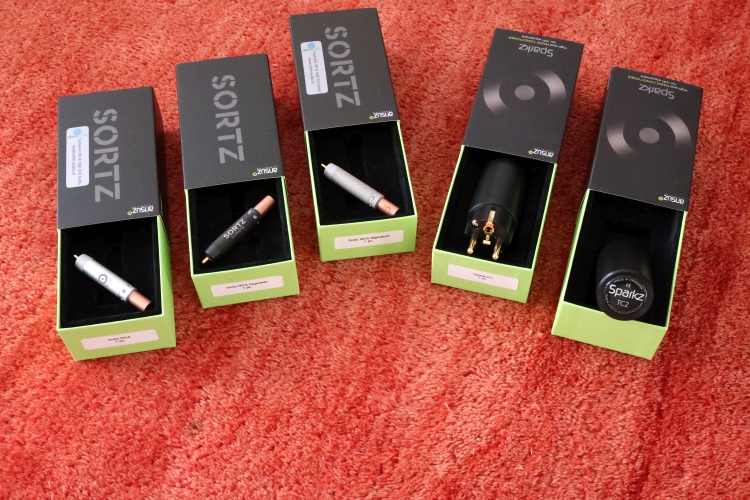
Oh wow, THIS review sounded promising so i ended up buying a few packets of them. turns out i really only needed two of them. they work so well in doing everything you described. my experience IS totally similar. so A thank you for reccomending this product to me. i had planned putting my son through university, but i have since CONvinced him to go through trade school as well, which is great because my savings are now dried up.
godspeed
That is a very craftily disguised disapproving commentary, my compliments:-)